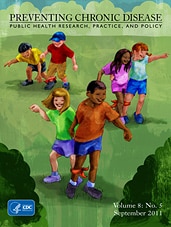(Salt Lake City, UT) – A Utah Department of Health (UDOH) study shows Pacific Islander and African American/Black residents have the highest infant mortality rates of all Utah racial/ethnic groups. However, data from the same report show that rates are also higher in three small rural areas of the state with very few Pacific Islander or African American/Black residents.
“These infant mortality data demonstrate why it’s so important to look at health differences by geography as well as by race,” said April Young Bennett, Health Program Specialist with the UDOH Office of Health Disparities Reduction (OHD). “Our office has been working with racial minorities to address their infant death rates, but non-minorities in certain rural areas have high rates as well.”
In 2005-2008, the statewide infant mortality rate was 4.4 per 1,000 live births. In comparison:
- The Utah Black/African American rate was 6.8 per 1,000 live births
- The Utah Pacific Islander rate was 8.4 per 1,000 live births
During the same time period, the small areas with the highest infant mortality rates were:
- Sevier/Piute/Wayne counties at 9.07 per 1,000
- Wasatch County at 8.21 per 1,000
- Box Elder County (excluding Brigham City) at 7.91 per 1,000
OHD has interviewed Utah Pacific Islanders and African Americans/Blacks to learn how to address infant mortality in their communities. Pacific Islanders reported that many people in their community were unaware of pregnancy health guidelines such as folic acid consumption, appropriate pregnancy spacing, and when to get prenatal care. African Americans told OHD staff that they need better access to birth control options and women’s health care before pregnancy. Based on these discussions, OHD has contracted with the Queen Center, the National Tongan American Society, and Project Success to conduct health outreach projects.
“The new report is one of the first OHD efforts to analyze health disparities by geography since Utah lawmakers expanded our mission during the 2011 legislative session,” said Bennett. “We’re excited to address all kinds of health disparities, whether based on race, geography, income, or some other factor.”
The report also discusses overweight by race and geography. Unlike infant mortality, Utahns living in urban areas have higher rates of overweight and obesity than those in rural areas.
View the complete report at http://health.utah.gov/opha/publications/hsu/1108_DispRep.pdf.



 (Includes podcast interview with Camillia Lui, winner of the inaugural Preventing Chronic Disease Student Paper Competition)
(Includes podcast interview with Camillia Lui, winner of the inaugural Preventing Chronic Disease Student Paper Competition) 